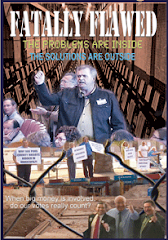Economic Policy Institute
June 17, 2009
26 Dems Editorial Note: Dr. Irons, Director of the Economic Policy Institute provided written testimony to the Senate Special Committee on Aging, June 17, 2009
Thank you Chairman Kohl, Ranking Member Martinez, and other members of the committee for inviting me to testify today.
The Social Security system has been the bedrock of retirement security for Americans for over half a century. Over the years, the system has evolved in response to changing conditions. As is well known, program outlays are expected to outpace revenue so that the system faces a shortfall over the next 75 years. Responsible stewardship of the program would necessitate making feasible adjustments to move us towards sustainability.
Long-run balance within the system can be achieved in one or a combination of three ways: by reducing total benefits, by increasing payroll tax revenue currently dedicated to Social Security, or by transferring general revenue to Social Security.
My testimony today will focus on the second of these options - that is, increasing payroll tax revenue. Specifically, I want to suggest that any policy to increase overall revenue through the payroll tax should include an increase in the cap on earnings subject to the tax.
As you know, Social Security taxes are levied on earnings up to a maximum level that is adjusted each year to keep pace with average wages. In 2009, this payroll tax cap is set at $106,800 dollars, and roughly 6 percent of the population has earnings above the cap.
Due to growing income inequality, the share of earnings above the cap has risen from 10 percent in 1982 to over 16 percent in 2006. This is because incomes have grown strongly at the top while middle incomes have stagnated.
This trend is expected to continue, meaning that a growing share of earnings will remain outside the tax base.
Continue reading here.
















